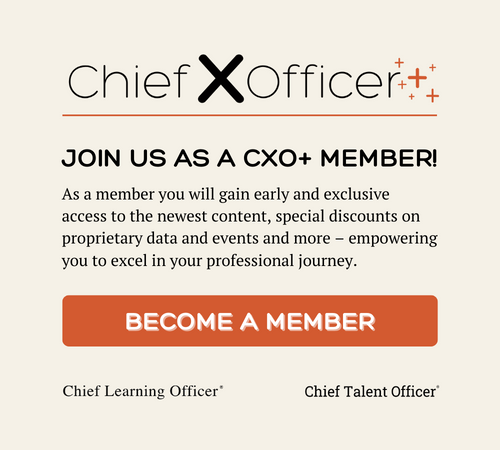The COVID-19 pandemic has significantly impacted the way we work and resulted in the rise of hybrid work arrangements where employees work both remotely and on-site. Consequently, there is a greater need for effective leadership programs that can help managers navigate the challenges of leading a team in a hybrid workplace.
According to a study conducted by Microsoft in March 2021, 73 percent of workers desire flexible remote work options, while 67 percent want more in-person work or collaboration. The research suggests that hybrid work arrangements present unique challenges that require a tailored approach. Leadership programs can enhance the necessary skills required of leaders in this new era.
In a hybrid environment, managers must be able to communicate effectively with remote team members, foster collaboration among team members who are not physically together, hold people accountable and promote mental wellness to ensure employees feel supported and motivated. There are many important considerations when designing a leadership program for a hybrid audience.
Developing remote communication skills
One key challenge of leading a hybrid team is remote communication. With team members working in different locations, it can be challenging to communicate effectively and ensure that everyone is on the same page. Effective leadership programs must provide guidance on developing remote communication skills to help managers navigate these challenges.
One strategy for developing remote communication skills is to use a variety of communication tools. Managers can use videoconferencing, chat applications and email to communicate with remote team members. They should also be mindful of the tone and language they use in their communication to ensure their messages are clear and concise.
Albert Mehrabian, a researcher of body language, first broke down the components of a conversation. He found that communication is 55 percent nonverbal, 35 percent vocal and only 7 percent words. It is essential to consider this when we are communicating remotely. Utilizing video often assists in better communication so employees can pick up on nonverbal cues that would otherwise be lost by phone conversations alone.
Another strategy is to establish regular check-ins with remote team members. Managers should schedule regular calls to touch base with those not frequently seen in person and provide them with the support they need to be successful. Asking questions about well-being in addition to understanding workflows will go a long way. This can help to build trust and ensure that remote team members feel connected to the team.
Fostering team collaboration
Another challenge of leading a team in a hybrid workplace is fostering collaboration among team members. In a survey conducted by PwC in June 2021, 55 percent of executives said they plan to have a hybrid work model in place. Effective leadership training must provide managers with strategies for building a sense of teamwork and collaboration among team members, regardless of location.
One strategy for fostering team collaboration is to establish clear expectations for teamwork. Managers should set goals and expectations for collaboration and provide team members with the tools and resources they need to work together effectively. This can include using collaboration tools such as shared calendars, project management software and file sharing platforms.
Another strategy is to encourage team members to get to know one another. Managers should schedule virtual team-building activities and encourage team members to participate in informal conversations and social events. This can help create a sense of community.
Holding team members accountable
Interestingly, research suggests that holding people accountable is even more important in hybrid work environments than in traditional in-person work environments. A survey conducted by the staffing firm Robert Half in 2020 found that 54 percent of managers said maintaining accountability for remote workers is a significant challenge. Without accountability, remote workers may feel disconnected or disengaged from their work, which can lead to decreased productivity and lower quality of work.
Additionally, a 2020 Harvard Business Review study found that managers who hold remote workers accountable for their work are more likely to see high levels of engagement, motivation and performance among those workers. The study also found that accountability helps remote workers feel more connected to their team and organization, which can improve retention rates.
One strategy for promoting accountability in a hybrid environment could be utilizing online project tracking tools such as Trello, Monday.com or Microsoft Planner. These tools allow everyone to have visibility into what is occurring, how to prioritize, how to notify people about deadlines, how to oversee progress and more. Utilizing an online tool gives leaders an easy way to communicate and keep everyone aligned when walking up to a team member in the office isn’t an option.
Promoting mental wellness
Effective leadership programs in a hybrid workplace must prioritize promoting mental wellness, given the unprecedented levels of stress and anxiety brought about by our ever-changing environment. According to a survey by Accenture, 60 percent of employees believe that remote work has improved their work-life balance, which is encouraging news.
One strategy for promoting mental wellness is to establish regular check-ins with team members beyond work updates, providing resources and support when needed. Encouraging team members to prioritize self-care activities, such as exercise and hobbies, is also important. This can help team members feel supported and motivated to perform at their best.
Uncertainty breeds anxiety, and we’re living in uncertain times. By focusing on providing as much stability as possible to their teams, managers can be a source of support. When a manager is open and vulnerable to their own challenges, this can normalize the employee experience.
Training managers on the topic of mental health can help. As more and more employees struggle with mental health, it is important to debunk common myths, reduce stigma and build necessary skills to have productive conversations about mental health at work. Mental health employee resource groups are another opportunity to offer a low-cost way to increase awareness, build community and provide support.
Challenges to hybrid leadership programs
Implementing effective hybrid leadership programs can also be challenging due to technological limitations. Not all team members understand how to fully utilize the technology and tools needed to participate in online leadership training and development. This can create a disparity in learning opportunities and hinder the development of certain team members. As the workplace continues to evolve, leaders must be prepared to accelerate their online skills and adapt their leadership program curriculum to meet the changing needs of their team members.
Many leaders believe that managing a hybrid work environment is easier than a fully remote one and that their pre-pandemic leadership style will suffice. This assumption is incorrect. Leading a hybrid environment presents greater challenges to ensure effective management. With everyone working remotely, the shared experience creates a sense that everyone is in the same boat so there’s unity. In a hybrid work environment, there is more of an “us vs. them” mentality that can emerge between those working in the office and those working from home. Leaders who manage hybrid environments will face challenges that they have yet to experience.
Another challenge is maintaining engagement and participation in hybrid leadership programs. In a hybrid work environment, team members may have different office/home spaces conductive to learning. Leaders must find ways to make leadership training and development relevant, engaging and meaningful to team members from diverse working situations. This may require incorporating interactive and collaborative learning activities, providing personalized coaching and feedback and offering ongoing support and resources.
Lastly, measuring the effectiveness of leadership programs in a hybrid environment can be challenging. Traditional metrics used to evaluate training and development programs may not be applicable or effective in a hybrid work environment. Leaders must identify and track relevant metrics that demonstrate the impact of leadership programs on team performance, engagement and overall organizational success while considering hybrid scenarios.
How to face the challenges of designing a hybrid leadership development program
To keep up with the changing times, leadership development programs must evolve. The following statistics shed light on the changes that have occurred in leadership programs since the pandemic.
- In a survey conducted by HR consulting firm Eagle Hill Consulting, 67 percent of companies increased their use of virtual leadership training in 2020.
- According to a report by McKinsey & Co., leadership development programs are now placing a greater emphasis on building resilience and emotional intelligence in leaders to help them navigate the challenges of the pandemic.
- With remote work becoming more common, leadership programs have had to incorporate new technologies and digital tools to facilitate virtual learning and collaboration. A report by Training Industry found that the use of virtual classroom technologies increased by 44 percent in 2020.
- According to a Deloitte survey, 80 percent of organizations have either adopted or are considering adopting an agile approach to leadership development, which emphasizes adaptability, collaboration and flexibility.
Given this research, the following tips may be useful when designing a leadership development program for a hybrid workforce:
- Allow experiential learning and case studies where participants can generate ideas and discuss them in a simulated or low-risk environment. Breakout rooms can be effective if there are delegated room leaders to keep participants on track.
- Practice skills in real time. In-person training provides the opportunity for learners to practice, fail and iterate. In a hybrid model, practicing skills should still take place. Where possible, design the program so learners can practice in person, or at a minimum, utilize video/audio during breakout sessions.
- Utilize online sessions to provide follow-up coaching and mentorship that includes feedback and allows for accountability around how participants are applying what they have learned throughout the program.
- Consider microlearning, providing learning objects when and where the learner needs them. These can be particularly effective on the job so participants can apply and practice what they’re learning.
In summary, effective leadership development programs in a hybrid workplace require leaders to develop remote communication skills, foster team collaboration and promote mental wellness. Implementing these programs also requires agility, alignment with a shifting work culture, technological acceleration, engagement and effective measurement strategies. Leadership development programs would do well to focus on these areas so leaders learn to navigate these challenges to create a sustained culture of effective leadership in a constantly evolving hybrid work environment.











